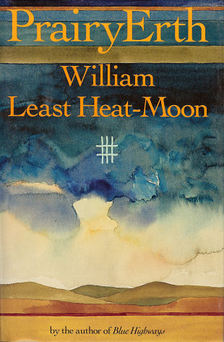Armloads of the World
That there is something rather than nothing has nailed many good philosophers to their chairs, but equally befuddling is matter’s refusal to remain an undifferentiated mist adrift in space. Lucky for us that individual atoms dance with other atoms, adhering, combining and recombining, arranging and rearranging, shuffling among themselves, piling likes upon likes and the similar upon the dissimilar and again upon the ever more dissimilar until a few particles of spinning energy join up to become a grain of sand, then a dandelion seed beneath a parachute of fluff, then a sixteen-penny nail holding together two boards in a house in Malawi, then a Labrador retriever leaping for a Frisbee on a beach in San Diego, then a fusty mathematician laying out the axioms of Euclid. Pure matter, that tireless flow of particles and energy, is amazing enough. Throw life into the broth and the universe becomes so astounding that we should be stupefied with wonder.
Instead we get down to work, and one way is by trying to gather up as much of the world as we can and cram it between covers. That impulse is behind books as varied as Joyce’s Ulysses, Agee’s Let Us Now Praise Famous Men, and William Least Heat Moon’s PrairyErth, three ambitious works linked by their intention to portray a specific place and time in extraordinary detail. Critics have declared all three to be brilliant failures. How could they not fail? They are such impossibly ambitious books that we can easily forgive their shortcomings and appreciate even more their successes. Maybe that explains in part why they are among the dozen or so books that I reread every few years.
Agee knew that there was no hope he could succeed in portraying the lives of three Southern tenant families in 1936 in all their “immeasurable weight in actual existence.” What began as a magazine assignment for Agee and photographer Walker Evans soon grew into a much more ambitious project. Walker’s photos – 61 of which are included in most editions of the book – are among the most famous to have emerged from Depression-era America. Agee thought that Walker’s images captured the lives of the tenant families more truly than words could, and admitted that a more successful project would be for him to “do no writing at all here. It would be photographs; the rest would be fragments of cloth, bits of cotton, lumps of earth, records of speech, pieces of wood and iron, phials of odors, plates of food and of excrement. Booksellers would consider it quite a novelty; critics would murmur, yes, but is it art… A piece of the body torn out by the roots might be more to the point.”
 Least Heat-Moon wondered if his search for the true identity of Chase County, Kansas might be more effective if he were to “just gather up items like creek pebbles into a bag and then let them tumble into their own pattern?” The problem – how to make words stand in for concrete, physical things and actual, living beings – has always bedeviled writers. Agee and Least Heat-Moon (and Joyce, of course) rely on the mud-against-the-wall tactic of inventorying humans, animals, plants, rocks, soil, houses, barns, waterways, the scent of meadows and the stink of barnyards, the words uttered by men, women, and children (and the manner in which they utter them), distillations and catalogs of seemingly every word previously written about them, notices on town halls and in tavern toilets, the authors’ direct perceptions, wishes, intentions, and prejudices, all in efforts to get at the unique nature of a place and its inhabitants. Least Heat-Moon, who describes his perception of place as “part of a deep landscape in slow rotation at the center of a sphere and radiating infinite lines in an indefinite number of directions,” subtitles his book “a deep map,” and sets out to embrace time as well as place and present a multi-dimensional and non-lineal portrait of his Kansas county. He speaks for everyone who has wrestled with this challenge when he writes, “If a traveler can’t penetrate a place, maybe it can penetrate him.”
Least Heat-Moon wondered if his search for the true identity of Chase County, Kansas might be more effective if he were to “just gather up items like creek pebbles into a bag and then let them tumble into their own pattern?” The problem – how to make words stand in for concrete, physical things and actual, living beings – has always bedeviled writers. Agee and Least Heat-Moon (and Joyce, of course) rely on the mud-against-the-wall tactic of inventorying humans, animals, plants, rocks, soil, houses, barns, waterways, the scent of meadows and the stink of barnyards, the words uttered by men, women, and children (and the manner in which they utter them), distillations and catalogs of seemingly every word previously written about them, notices on town halls and in tavern toilets, the authors’ direct perceptions, wishes, intentions, and prejudices, all in efforts to get at the unique nature of a place and its inhabitants. Least Heat-Moon, who describes his perception of place as “part of a deep landscape in slow rotation at the center of a sphere and radiating infinite lines in an indefinite number of directions,” subtitles his book “a deep map,” and sets out to embrace time as well as place and present a multi-dimensional and non-lineal portrait of his Kansas county. He speaks for everyone who has wrestled with this challenge when he writes, “If a traveler can’t penetrate a place, maybe it can penetrate him.”

“Armloads…” is a pleasure to read.